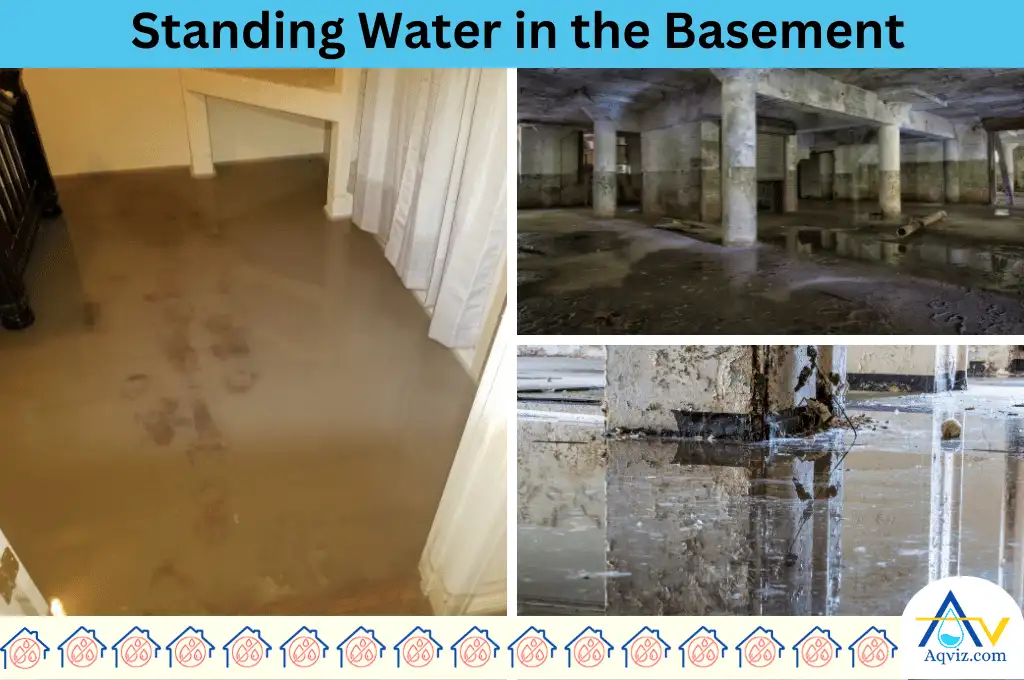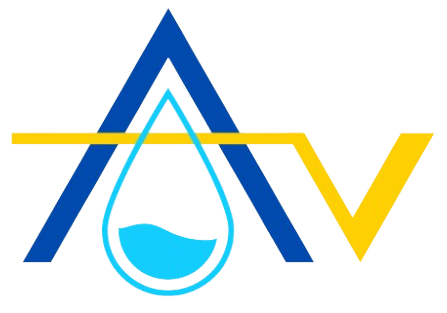6 Critical Water Problems and Solutions in the House

A water problem in the house is an issue caused by the presence, movement, or absence of water that negatively affects the house’s structure, materials, or environment. There are mainly two types of water problems: liquid water problems and vapor water problems. Prolonged water problems cause water damage to the house. So these are the common six water problems you should identify before they grow and cause severe water damage in the house.
- Water seepage in the house
- Standing water in the basement
- Water table rising close to the basement
- Wall dampness in the house
- Higher humidity level
- Higher moisture level
These water problems negatively affect the house structure. To prevent these critical water problems, Aqviz experts suggest the following suggestions.
What is the Definition of a Water Problem in the House?
The definition of a water problem in a house is an issue caused by the presence, movement, or absence of water that negatively affects the house structure, materials, or environment. Water problems occur due to liquid water and vapor water. Liquid water problems occur due to water pressure, temperature difference, changing the water flow direction, unexpected water accumulation, while vapor water problems occur due to changing the airflow direction, lack of sunlight, changing the environmental conditions, and improper interior design.
These water problems result the severe water damage in the house. Severe water damage in the house includes mold and mildew growth, water stain marks, musty and earthy odor, house wood rotting, metal corrosion, material erosion, and paint peeling in the house.
Are Home Water Problems and Water Damages the Same?
No, Home water problems and water damage are two different scenarios. If we recall it “Home water problems are issues caused by the presence, movement, or absence of water that negatively affects house structure, materials, or environment, while house water damage is a deterioration or destruction of building materials, finishes, and structural elements caused by unwanted water intrusion.
We can consider the water problem is the source, and water damage to be the result. Without a water problem, there is no water damage.
What are the 6 Water Problems in the House?
These are the 6 water problems in the home
- Water seepage in the house
- Standing water in the basement
- Water table rising close to the basement
- Wall dampness in the house
- Higher humidity level
- Higher moisture level
1. Water Seepage in the House
The water seepage is moving water from the source gradually. The seepage rate depends on the material porosity and water source pressure. Basement floor seepage, basement wall seepage, foundation seepage, crawl space seepage, slab seepage, and wall seepage are the most common seepage issues in the house. These seepage issues cause many negative impacts on the house.
The seepage rate is increased due to rain and snow melting, poor drainage systems, increasing cracks and gaps, rising groundwater levels, high hydrostatic pressure, bathroom waterproofing damage, and poor landing issues. The causes of the water seepage in the house are land inclination to the foundation, heavy rainfall, poor soil drainage, faulty plumbing, leaky pipes, andan improper drainage system in the garden.

2. Standing Water in the Basement
The standing water in the basemen t is increasing the water level in the basement. This is called basement flooding . Basement floor flooding and basement drainage flooding are the two types of basement flooding in the home. Standing water in the basement is one of the major issues for the many water-related damages in the house.
The basement water standing occurs due to higher hydrostatic pressure, insufficient French drain capacity, faulty gutters and downspouts, improper landscape sloping, plumbing failures, and sump pump failures in the basement.

3. Water Table Rising Close to the Basement
The water table is the water level below the ground surface that is completely saturated with water. The water table height can rise and fall according to the accumulation of the groundwater. The water table can cause many water-related damages in the home. Its height is increased due to rain and snow melting season and plumbing damage in the ground. The rising water table can increase other types of water issues in the house.
The increase in the seepage rate, the increase in water leaking, sudden basement flooding, basement erosion, and the formation of building cracks are the main effects of the water table rising at the house. These issues have a negative impact on the house, which can reduce the structural strength and aesthetic appeal of the house. In order to prevent these problems, you should reduce the water table height by building an outer drainage.
4. Wall Dampness in the House
The wall dampness is the presence of excess moisture that can not escape from the house. The most water damping areas in the house are basement walls, bathroom walls, laundry room walls, and kitchen walls. Wall dampness causes many negative impacts on the home.
Wall dampness is increased due to increasing the moisture content in the home. The moisture content will increase due to basement seepage, basement flooding, kitchen steam, plumbing leaks, inadequate ventilation, roof leaks, and clothing lines.

5. Higher Humidity Level
When the relative humidity level is more than 60%, it is considered as a higher humidity level in the house. Higher humidity levels affect on walls, ceilings, and windows in the house on various types of materials. Higher humidity levels cause many negative impacts in the house. The humidity level can increase due to weather conditions (rain, snow), poor ventilation, leaking pipes, cooking steams, showering and bathing water, cloth lines, and growing house plants in the home.
In order to reduce the humidity level in the house, you can use a dehumidifier, improve ventilation, seal the leaks, limit indoor plants, use moisture absorption, use fans, and use an air conditioner.
6. Higher Moisture Level
Moisture is the measurement of the amount of water in the air. The moisture level depends on the humidity and temperature. When the humidity level is changed with the temperature, the moisture content is varied. The high moisture level negatively affects the house structure and its materials.
In order to reduce the moisture level in the house, you should increase the ventilation, install a dehumidifier, use an air conditioner, limit the indoor plants, fix leaks and seal cracks, use absorbing materials, and keep surfaces dry.
What are the Solutions for Water Problems at Home?
These are the solutions for each house water problems mentioned above.
Problem: Water seepage
Solutions for the water seepage at the home
- Install an interior French drain system
- Seal cracks and damages in the structure using the crack sealing method
- Install a waterproofing membrane on walls and slabs
- Grade the soil to direct surface water away from the foundation
- Improve the roof drain system
- Seal the door and window spacing
- Maintain the plumbing system properly
Problem: Standing water in the basement
Solutions for standing water in the basement
- Install a sump pump system with a battery backup
- Create a sump basin with a check valve discharge
- Add an interior perimeter drain tile system
- Use floor slope correction to direct water toward drains
- Maintain the plumbing and sewer system properly
Problem: Water table is rising close to the basement
Solutions for the water table rising
- Excavate and install deep French drains or curtain drains
- Lower local saturation with a dewatering system
- Use HDPE waterproofing membrane on exterior walls
- Monitor levels with piezometers or hydrostatic level sensors
- Use an efficient sump pump system with a backup battery pack
Problem: Wall dampness in the house
Solutions for wall dampness
- Waterproof the slab, balcony joints, and ceiling
- Extend the roof soffit distance
- Increase the roof slope
- Apply exterior damp proofing agents
- Improve the interior ventilation system
- Use interior air gap drainage membranes behind drywall
Problem: Higher humidity level
Solutions for higher humidity levels
- Install a whole-house dehumidifier or a basement dehumidifier
- Seal crawl spaces with 6-mil vapor barriers
- Improve airflow using HVAC returns and exhaust fans
- Replace insulation with closed-cell spray foam in damp areas
Problem: Higher moisture level
Solutions for higher moisture levels
- Use hygrometers to monitor and control moisture levels
- Install a moisture management wall system
- Replace carpets with moisture-resistant flooring
- Apply anti-condensation wall paints and sealers
Read More About: What is a Moisture Barrier?
What are the Severe Water Damages in a House?
These are 8 severe water damages in the house.
- Severe mold infestation in the house
- Permanent water stain marks in the house
- Musty and earthy smell in the house
- Structural and furniture wood rotting
- Metal corrosion in the house
- Material degradation in the house
- Home material erosion
- Paint peeling in the house
If you need to stop these water damages in the home, you should read this guide. It includes 10 Tested Ways to Stop Water Damage to Your House
